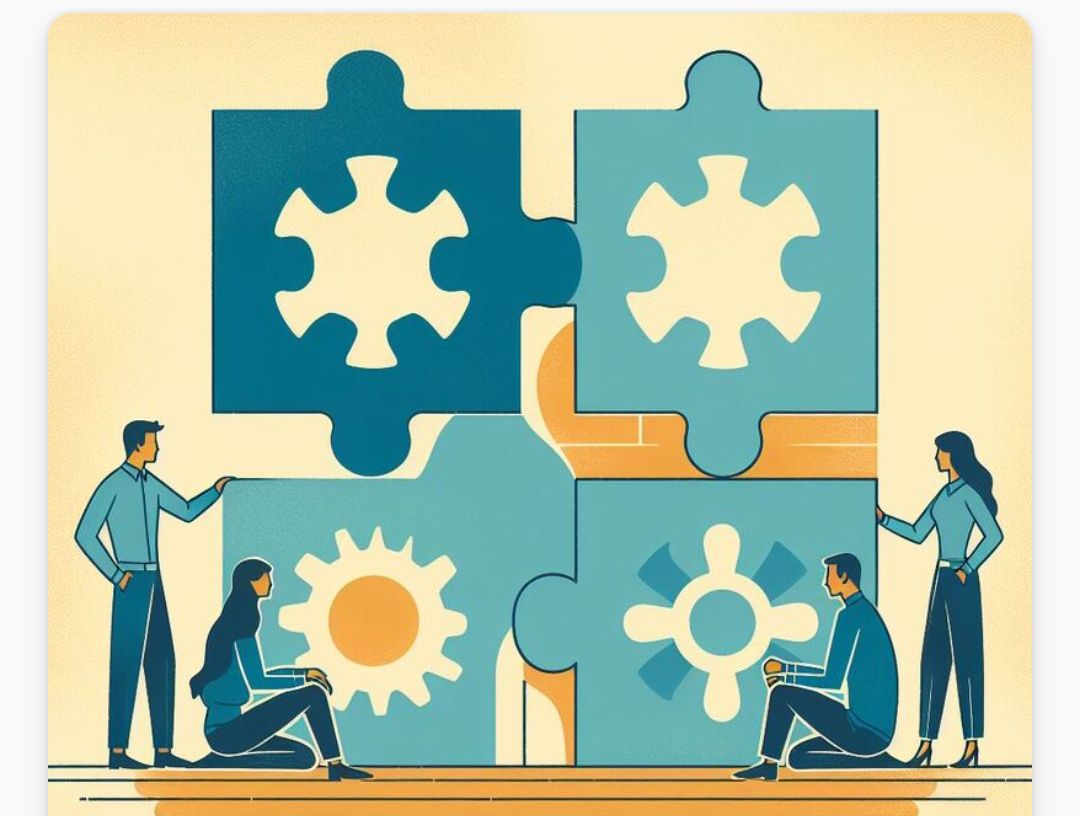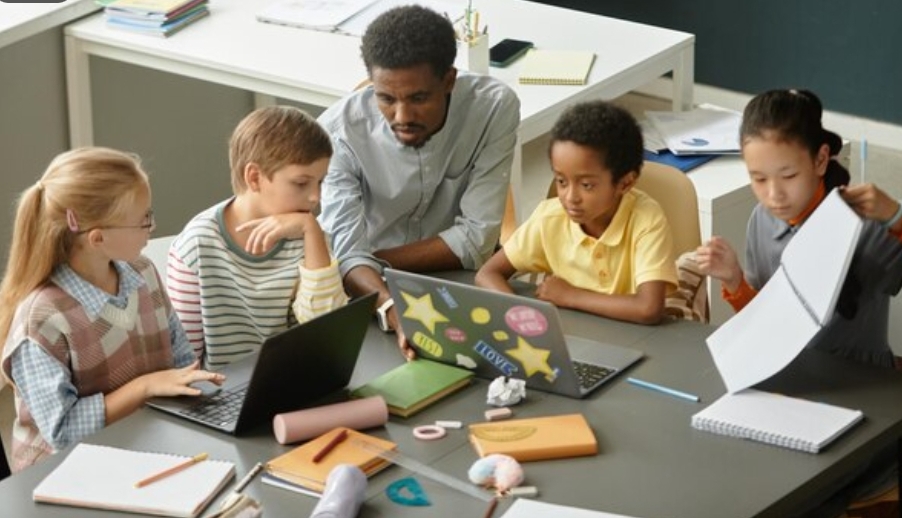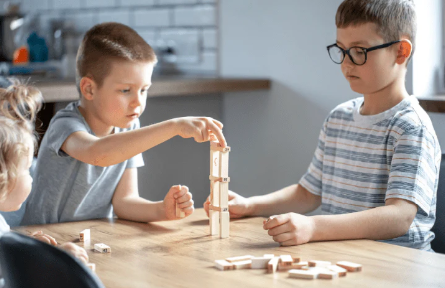
Building successful collaborations is an art form, blending clear communication, strong teamwork, and a shared vision. Today, we have the pleasure of interviewing Dr. Amelia Rodriguez, a renowned expert in Organizational Psychology with a proven track record of forging effective partnerships across diverse industries. Let’s delve into Dr. Rodriguez’s insights and glean valuable strategies to boost teamwork and propel projects to success!
Question:. What are some key qualities essential for effective collaboration?
Dr. Amelia Rodriguez: Absolutely! Effective collaboration hinges on a core set of qualities. Here are a few crucial ones:
Communication: Clear, concise, and transparent communication is paramount. Actively listen to understand, express your ideas effectively, and be open to feedback.
Critical Thinking: Analyze information objectively, identify potential challenges, and work together to find creative solutions. This fosters a problem-solving environment that benefits the project.
Empathy & Respect: Value your collaborator’s perspective and acknowledge their strengths. Celebrate diverse viewpoints and navigate disagreements respectfully.
Reliability & Accountability: Meet deadlines, deliver on commitments, and hold yourself and your partner accountable for achieving project goals.
Flexibility & Adaptability: Be open to change, adjust your approach as needed, and embrace new ideas that may emerge throughout the collaboration.
Question:. How can we establish clear expectations and roles within a collaborative project?
Dr. Amelia Rodriguez: Setting clear expectations is the foundation for a smooth collaboration. Here’s a winning approach:
Project Goals & Scope: Define the project’s overall goal and break it down into manageable tasks. This provides clarity on what needs to be achieved and by whom.
Role Definition: Clearly outline each collaborator’s responsibilities and areas of expertise. This ensures everyone understands their contribution and avoids confusion.
Communication Channels: Establish preferred communication channels (email, project management tools) and set expectations for response times. This keeps everyone on the same page and ensures timely information flow.
Question:. What are some effective strategies for navigating disagreements that may arise during collaboration?
Dr. Amelia Rodriguez: Disagreements are inevitable, but they can be constructive if managed effectively. Here’s how to navigate them:
Focus on the Issue, Not the Individual: Keep the discussion focused on the problem at hand, not personal attacks.
Listen With an Open Mind: Actively listen to your collaborator’s perspective to understand their reasoning.
Brainstorm Solutions: Work together to identify solutions that address the core of the disagreement and benefit the project as a whole.
Compromise Willingness: Be open to compromise and find a solution that incorporates valuable aspects of both perspectives.
Question:. How can we leverage technology to enhance collaboration, especially in a remote work environment?
Dr. Amelia Rodriguez: Technology is a powerful tool for fostering collaboration, even across distances. Here are some ways to leverage it:
Project Management Platforms: Utilize project management tools like Asana or Trello to assign tasks, track progress, and share documents seamlessly. These platforms can also be used for discussions and file sharing, creating a centralized hub for project information.
Cloud-Based Storage: Employ cloud storage solutions like Google Drive or Dropbox to ensure everyone has access to the latest project files and updates. Cloud storage eliminates the need for emailing large files back and forth and ensures everyone is working on the most current version of documents.
Video Conferencing Tools: Utilize video conferencing platforms like Zoom or Skype to facilitate face-to-face communication and foster a sense of connection, even when working remotely. Video conferencing allows for real-time discussions, presentations, and brainstorming sessions, making remote collaboration more interactive and engaging.
Question:. Collaboration thrives on a positive and supportive environment. How can we cultivate this within a team?
Dr. Amelia Rodriguez: Absolutely! A positive and supportive environment breeds creativity and motivation. Here are some tips:
Recognize & Celebrate Individual Contributions: Acknowledge your collaborator’s achievements and showcase their strengths. Public recognition goes a long way in boosting morale and fostering a sense of accomplishment.
Offer Encouragement & Feedback: Provide constructive feedback and offer encouragement throughout the project. Timely feedback helps collaborators course-correct and improve their work, while encouragement keeps them motivated.
Embrace a Culture of Learning: Encourage open communication and knowledge-sharing to foster a collaborative learning environment. This allows team members to learn from each other’s experiences and skillsets, leading to a more well-rounded and effective team
Question:. What advice do you have for holding effective virtual meetings that keep everyone engaged and productive?
Dr. Amelia Rodriguez: Virtual meetings are a cornerstone of remote collaboration, but they can also be a drain on time and energy if not managed effectively. Here are some tips for keeping your virtual meetings focused and productive:
Set a Clear Agenda & Time Limit: Clearly define the meeting’s purpose, desired outcomes, and allocate specific time slots for each agenda item. Sticking to a time limit ensures everyone respects each other’s schedules and maximizes efficiency.
Utilize Collaborative Tools: Leverage features like screen sharing, whiteboards, and breakout rooms offered by many video conferencing platforms to keep participants engaged and actively involved in the discussion.
Encourage Active Participation: Invite everyone to contribute, use polls or breakout rooms to brainstorm ideas, and avoid letting one person dominate the conversation.
Mindfulness of Time Zones: If collaborating across time zones, be considerate of everyone’s schedules and try to find a meeting time that works for most, or record the meeting for those who can’t attend live.
Question:. How can we manage conflict personalities within a collaborative team?
Dr. Amelia Rodriguez: It’s natural to have different personalities within a team. The key is to leverage these differences for a richer perspective and manage potential conflicts constructively. Here’s how:
Identify Personalities & Working Styles: Recognize the different personalities and working styles within your team. Some may be more direct, while others may prefer a more collaborative approach. Understanding these differences can help navigate communication and expectations.
Focus on Shared Goals: Remind everyone of the project’s shared goals and how each collaborator’s unique strengths contribute to achieving them. This helps shift the focus away from individual differences and towards collective success.
Embrace Healthy Debate: Encourage healthy debate and open discussion of different viewpoints. However, set ground rules for respectful communication and focus on finding solutions that benefit the project.
Utilize Mediators: If tensions escalate, consider involving a neutral third party to mediate the conversation and find common ground.
Question:. Collaboration often involves sharing sensitive information. How can we ensure data security within a collaborative project?
Dr. Amelia Rodriguez: Data security is paramount, especially when collaborating virtually and sharing sensitive information. Here are some steps to ensure data security:
Utilize Secure Platforms: Use secure communication channels and project management tools with robust security features like encryption and access controls.
Implement Data Access Restrictions: Limit access to confidential information on a need-to-know basis and utilize permission controls within project management tools.
Educate Team Members: Educate team members on data security best practices, such as using strong passwords and being cautious about opening suspicious emails or clicking on unknown links.
Regular Backups: Implement a regular data backup schedule to ensure you have a copy of your information in case of technical malfunctions or security breaches.
Question:. How can we measure the success of a collaboration?
Dr. Amelia Rodriguez: Effective collaboration leads to successful project outcomes. Here are some ways to measure the impact of your collaboration:
Project Goals & Deliverables: Track your progress towards achieving the project’s goals and completing key deliverables on time and within budget.
Team Satisfaction Surveys: Conduct surveys to gauge team member satisfaction with the collaborative process. This can provide valuable insights into communication, teamwork dynamics, and areas for improvement.
Project Outcomes & Impact: Evaluate the overall impact of the collaboration. Did it achieve its intended results? Did it generate new ideas or solutions?
Client Feedback: If collaborating with a client, gather their feedback on the project’s outcome, your communication style, and the overall collaborative experience.
Question:. Looking ahead, what trends do you see shaping the future of collaboration?
Dr. Amelia Rodriguez: The future of collaboration is bright and brimming with exciting possibilities! Here are a few trends to watch:
The Rise of AI-Powered Collaboration Tools: We can expect to see the emergence of artificial intelligence (AI) powered tools that can facilitate communication, streamline workflows, and even suggest solutions to problems, further augmenting human collaboration.
Focus on Diversity & Inclusion: There will be a growing emphasis on fostering diverse and inclusive collaboration teams. This will lead to a richer exchange of ideas and a more innovative problem-solving approach.
The Evolving Landscape of Remote Work: Remote work arrangements are likely to become even more commonplace. This will necessitate the development of even more sophisticated collaboration tools and strategies for effective virtual teamwork.
By embracing these trends and fostering a culture of collaboration, we can unlock a world of unprecedented innovation and progress. Collaboration is the cornerstone of human achievement, and by continuously refining our collaborative practices, we can tackle the world’s most pressing challenges and build a brighter future for all.
Thank you, Dr. Rodriguez, for sharing your invaluable insights! By incorporating these strategies, we can all become more effective collaborators and create a world where teamwork sparks innovation and drives positive change!
Do you have any questions or personal tips for fostering effective collaboration? Share them in the comments below, and let’s keep the conversation going! Together, we can create a network of empowered collaborators who can achieve remarkable things!










